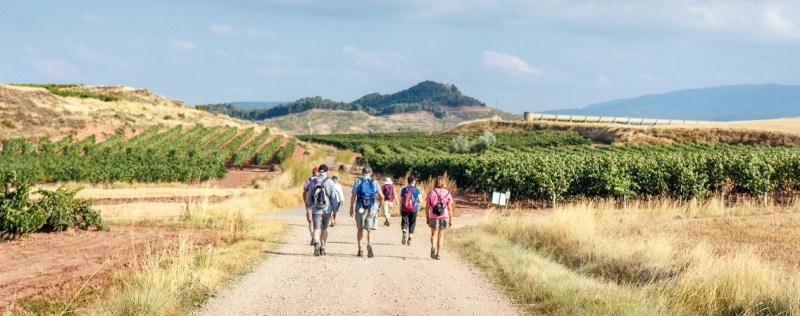
Spain is not just an idle beach holiday. The country will open up from an unexpected side if you try to walk through it. For example, along one of the world’s most famous pilgrimage routes – the ancient Way of St. James, Camino de Santiago (Spanish: Camino de Santiago).
There are many official route options: dozens of hiking trails from all over Spain, Portugal and France lead to the city of Santiago de Compostela, to the main temple of pilgrims – the Cathedral of St. James. According to legend, his relics are kept there.
We’ll tell you how to walk one of the most picturesque roads – the Northern Route, Camino del Norte (Spanish: Camino del Norte).
Entry rules
To travel to Spain, Russian citizens need a Schengen visa. You need to submit an application to the Spanish consulate or visa center from 6 months to 15 days before your trip, but the processing period can be extended to 45 days. The visa fee for tourists is 80 euros (approximately 6,500 rubles*).
How to get there
From Russia to Spain you can fly with transfers in Istanbul, Cairo or Abu Dhabi. Ticket prices from Moscow start from 27,600 rubles*.
Who walks the path of pilgrims
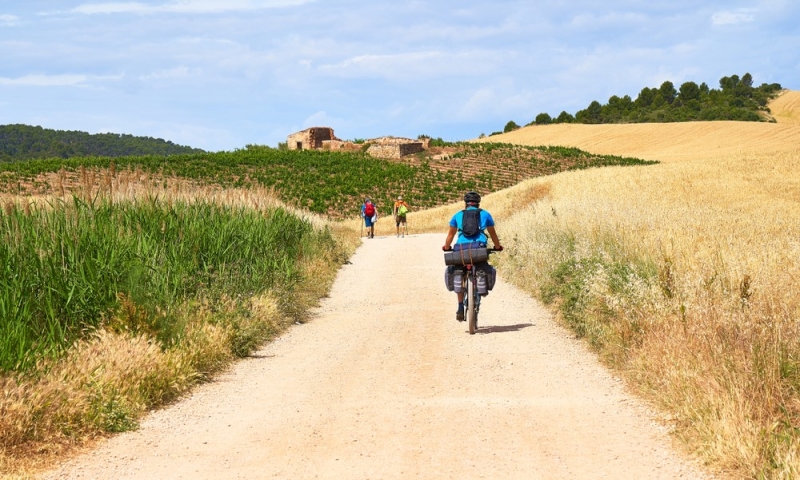
The Way of St. James can be covered on foot, by bicycle or on horseback. Travelers are called pilgrims. But today it is no longer necessary to go there for religious purposes. Many travelers hit the road to see Spain from an unusual perspective, to feel the authentic atmosphere in little-known places, to enjoy the scenery and solitude. They often call themselves turigrinos (from Spanish turismo – tourism and gringo – foreigner).
Pilgrim’s passport
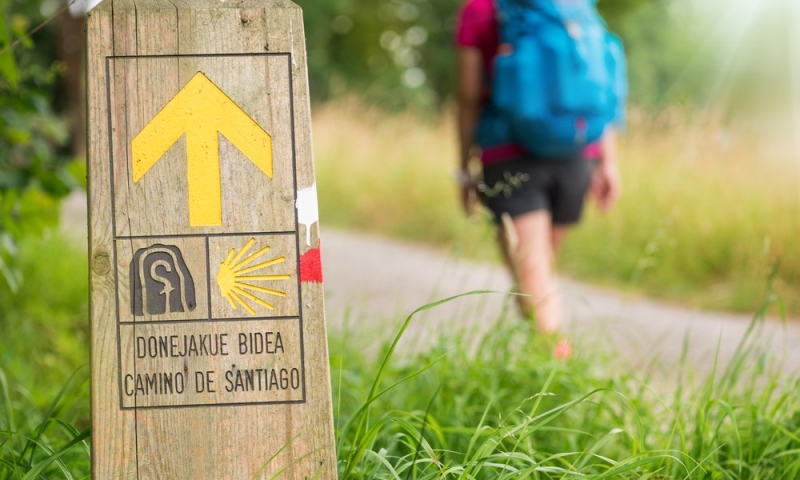
The path has its own rituals and obligatory documents. Before the start, each pilgrim must receive credential at the office of pilgrimage associations or city church- a kind of pilgrim’s passport. It makes it possible to spend the night in special hotels and shelters – albergues. The credential is stamped daily from places of overnight stay, churches or chapels along the way – evidence of being on the way to Santiago.
And this is also a wonderful and unique memory of the kilometers traveled and experiences.
Northern route
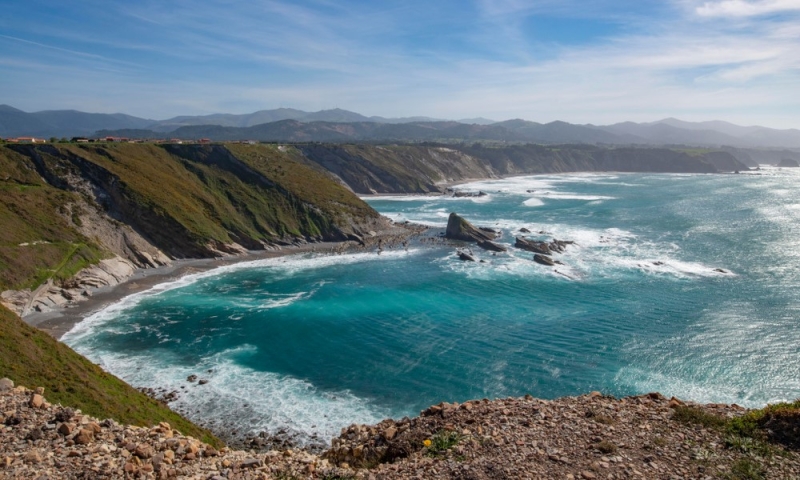
It starts in the city of Irún and runs along the coast of the Bay of Biscay and the Cantabrian Sea (Atlantic Ocean). You will walk 825 km through four regions – the Basque Country, Cantabria, Asturias and Galicia. The entire journey will take approximately 34 days.
On the way you will see hills covered with eucalyptus groves and coniferous forests, green fields, cliffs and rocks going straight into the sea, stunning panoramas of the endless ocean, cozy medieval towns and villages. And beaches, endless kilometers of beaches, sandy, rocky, popular urban and secluded wild ones. The path passes through different terrain – from forest rocky paths to busy asphalt highways. Northern Spain is a mountainous and hilly area, so be prepared to constantly gain and lose altitude.
As you move from one land to another, you will notice that each has its own characteristics. Basquiat– like a separate country within Spain, with its own original language, traditions and national character. In any conversation with the Basques, you can feel how proud they are of their history and culture.
Cantabria – these are pastoral pictures of wide pastures between hills and mountains, with neat rustic white houses and curious cows. This is a delicious homemade sheep cheese. And the smell of organic fertilizers from farms – be prepared for it on a hot sunny day.
Asturias – apple land. That’s why everything here is full of apples: gardens along the roads, storage facilities on high supports, even horses. The main drink of this land is, of course, apple cider. Stop by one of the many authentic cideries, where they will pour it to you according to all the rules.
GaliciaIt’s memorable because here the path turns inland, becomes less hilly, it’s easier to walk, and the speed of movement immediately increases.
How the Santiago Way works
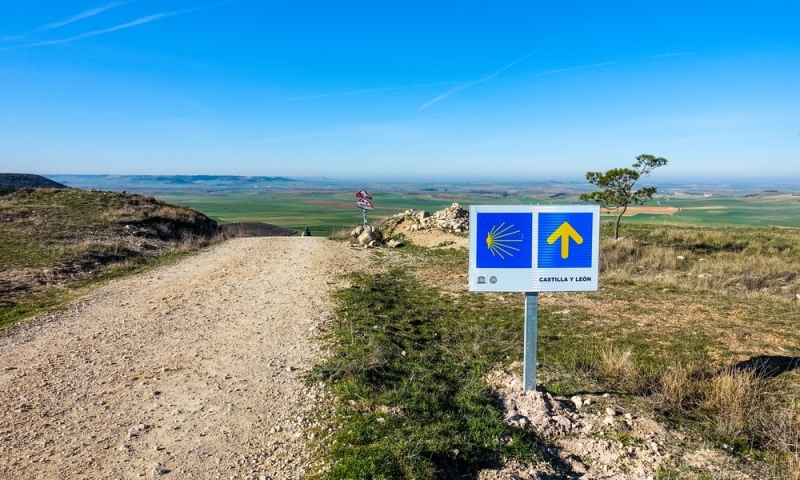
All routes, including the northern one, are well marked with the symbol of the Way of St. James – a shell with rays extending from it. The sign can be painted, tiled or mosaiced on buildings, rocks and trees. There are also separate columns with signs. But it’s worth paying attention – the rays of the shell point in different directions in different places, you can get confused and go in the opposite direction. In addition, some unscrupulous hotel owners draw false route signs so that travelers turn to them for the night.
The best option is to download the map, track and application, of which there are quite a few on the Internet, and check them regularly.
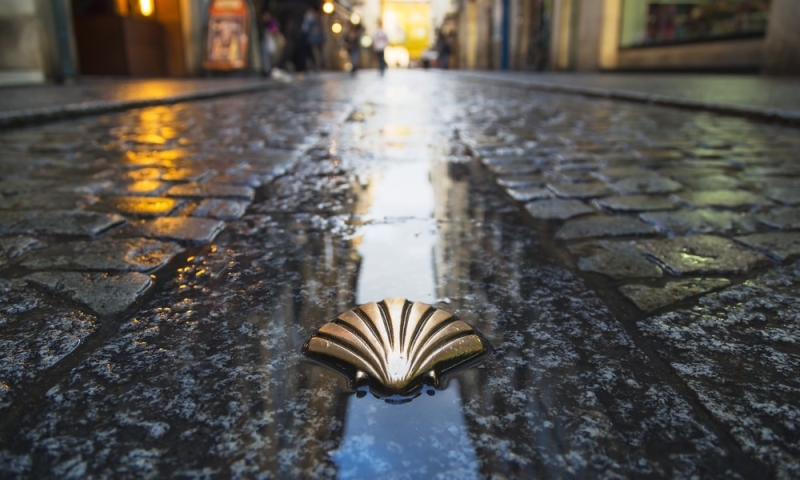
The entire northern route is divided into stages. They are designed so that within a day pilgrims reach a more or less large populated area, where there is a cafe and overnight accommodation. You need to walk about 20–30 km per day.
You can adapt the stages to suit you, shortening and lengthening them. But only hardy and prepared travelers can walk more than 40 km on such terrain.
To cover long distances, leaving time to contemplate the rich nature and relax on the beaches, pilgrims set out as early as 7–8 in the morning. In the summer, many people wake up even earlier in order to walk most of the road before the heat.
Where and how to spend the night
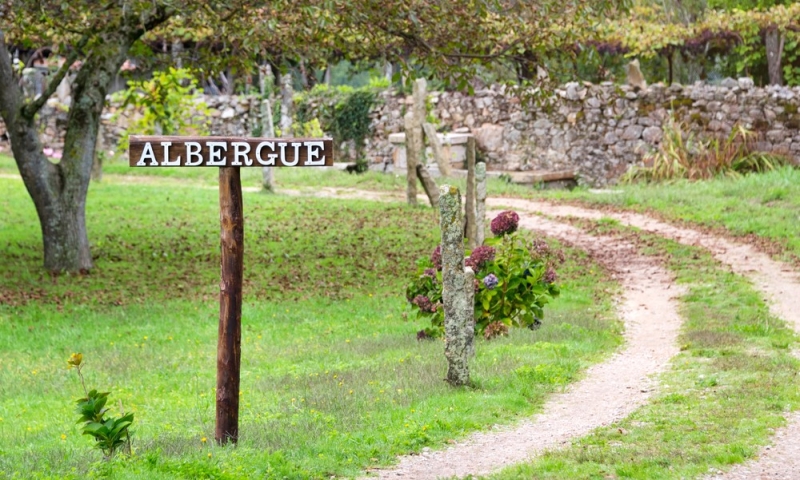
Albergue – special hostels for pilgrims along the Santiago Way. You can spend the night in them only by presenting your credentials. Municipal albergues are free, for any donation or a fixed fee from 5 euros (425 rubles*). There are the basics: beds, a toilet, a small kitchen and a hot shower. Private ones are a little more expensive, but still cheaper than most hotels.
There are different types of albergues: school gyms with rows of metal bunk beds, cozy houses with 10 beds, modern hostels with several floors. Or authentic places steeped in history. How do you like the opportunity to spend the night in the cell of a medieval active monastery, where you will be greeted with a cool lemon drink by real nuns? You will find this in the town of Laredo in Cantabria.
Most albergues will need their own sleeping bags. But some have real bed linen, for example, in the town of Otur, and this small nuance is a huge luxury for pilgrims.
All albergues are marked on the tracks, and you can read reviews about them on thematic sites.
The main advantages of shelters for pilgrims are the price and the unique warm atmosphere of the pilgrim community. But there is also a minus – after a hard day it can be difficult to sleep in the same room with other people.
Therefore, it is useful to keep track of hotel discounts and promotions on our website so that you can have a good rest in a separate room for almost the same amount.
Where and how to eat

Usually, all towns and villages have grocery stores, and albergues have kitchens, sometimes only with a microwave, but often with all the usual appliances and utensils. In larger cities there are supermarket chains Mercadona, Gadis, Dia. So the jamon, cheese, bread and wine beloved by travelers can be found almost everywhere. Important: on Saturdays and Sundays almost everything is closed, stock up on groceries in advance.
Many cafes along the route have a special menu for pilgrims: you can dine on paella, tortilla or Asturian fabada a little cheaper than usual.
Some albergues serve communal dinners for a donation: simple dishes like pasta, salad, wine and sweets. This is a great opportunity to communicate with pilgrims from all over the world, from Taiwan to Canada. Most visiting guests speak English, which, unfortunately, cannot be said about the Spaniards themselves. So be sure to download a translator app.
By the way, on the way it is customary to say hello, help if necessary, and wish you a good journey (Spanish: Buen camino). This is done even by local residents, who are accustomed to peaceful, polite pilgrims and treat them cordially.
What’s in the pilgrim’s bag
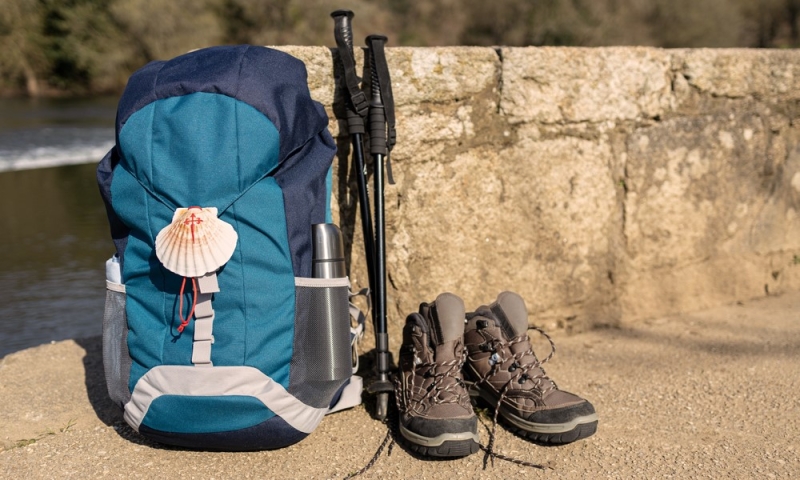
The right equipment can make the journey much easier. You will get tired in any case, but with a well-chosen backpack with waist support on your hips and quality, broken-in boots, this will happen much later. It’s definitely not worth saving on a backpack and shoes.
A set of things, standard for long hikes:
- hiking boots or sneakers,
- hiking synthetic socks, T-shirts, shorts/pants and thermal underwear,
- waterproof windbreaker and raincoat,
- fleece jacket,
- hat and sunglasses,
- cotton clothing for parking and sleeping,
- light sleeping bag,
- headlamp,
- first aid kit, hygiene products, personal utensils (light plate, mug, spoon),
- water bottle,
- Trekking poles are optional, but you can do without them on the northern route.
Rule of packing a backpack: everything heavy and bulky is placed down, the rest of the things are rolled up in tight rolls, laid in layers, and small items are distributed in the remaining cracks. Expect to carry an average backpack of 8-9kg along with snacks and water.
And remember the main thing: every 10 grams of extra things will turn into an extra kilogram on your shoulders by the evening of your walking day. Thick books, glass jars and “just in case” clothes are best left at home.
By the way, there is an interesting service along the route – send your backpack by taxi to the next point and go light. But then all the romance and authenticity of the pilgrimage route of St. James disappears.
What to do when you get very tired
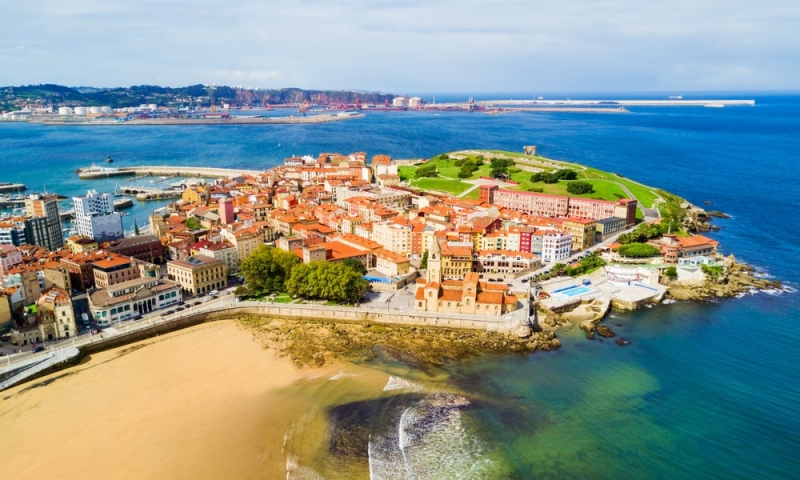
After about two weeks of travel, physical and psychological fatigue may occur. To have time to recover, alternate days of long marches with short stages of 14–16 km. Don’t neglect your daily stops at scenic spots.
Somewhere in the middle of the route, usually in the city of Gijon, many travelers take a break for a secluded holiday of 1-2 days.
A few more life hacks
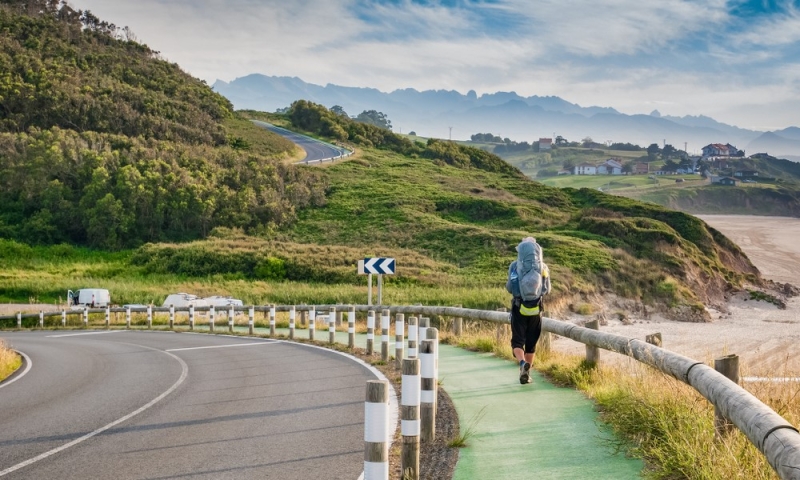
Calluses, minor injuries and aching knees are the eternal companions of pilgrims. To make your journey more comfortable, put regular Vaseline in your first aid kit – in the morning before going out, lubricate your toes with it, and calluses will not be so scary for you. Don’t ignore the sensations: if it seemed to you that something was rubbing and interfering inside the shoe, then it wasn’t your imagination. Stop, check, shake out the sand, apply a band-aid.
Grab an elastic bandage and kinesio tapes – they will help when pain appears in muscles and tendons that are not used to long walks.
In some albergues you can find unwanted guests who travel in pilgrims’ backpacks – bedbugs. Their bites can erase all the vivid impressions of the journey. New shelters often use anti-bug mattresses made of leatherette, but if you notice suspicious brown spots from crushed insects on the beds, it is better to sleep with the light on – bedbugs are active only in the dark. They also do not like strong strong odors. Periodically treat your backpack and sleeping bag with something like menthol mouthwash – this will repel small pests.
Where and how to get a certificate of completion of the path
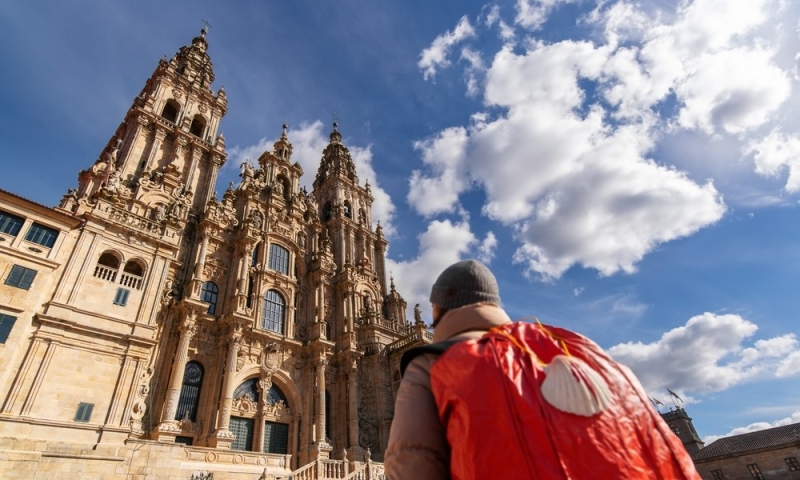
Having finally reached Santiago de Compostela and having dealt with the surging emotions, go to the pilgrimage office near the Cathedral of St. James. By presenting your credential filled with fancy marks to the employee who will check for daily stamps, you will receive your personalized compostela in Latin for free. This is a certificate confirming that you are a true pilgrim who has overcome the Camino de Santiago. For a few euros you can also get a certificate of the distance traveled indicating the mileage. When you look at these numbers, the distance traveled may seem unreal for a moment.
It will take several hours to wait in line, and if you get to the city in the afternoon, it is better to come to the office the next morning. Please take this into account when purchasing a return ticket.
Time of year to complete the path
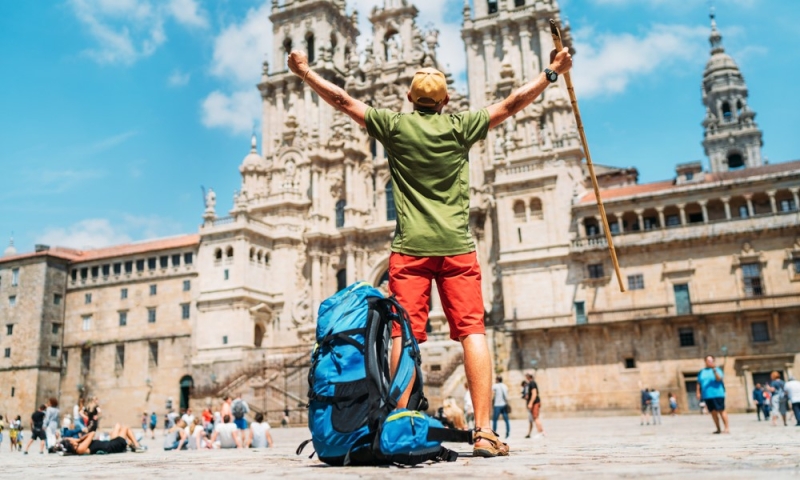
The climate in the north of Spain is humid and less hot than in the south. But in summer the temperature can rise to +25–30 °C and it is quite difficult to walk. During the high season there are many pilgrims and vacationers there. The most comfortable months for travel are April, May, September and October. There will certainly be rain and showers, but not prolonged ones. In any case, the weather is unlikely to seriously affect your experience of this amazing adventure.
*Prices are current at the time of publication.

